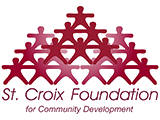In 2009, Common Core State Standards were developed by the Council of Chief State School Officers and the National Governors Association and adopted by the US DOE for the purpose of providing clear and consistent learning goals to help prepare students for college, career, and life. As defined by the Common Core State Standards [CCSS] Initiative the new standards “clearly demonstrate what students are expected to learn at each grade level, so that every parent and teacher can understand and support their learning. While the standards set grade-specific goals, they do not define how the standards should be taught or which materials should be used to support students.”
States were all given a choice to adopt both math and English/Language Arts standards. Most states (including the Virgin Islands) chose both standards while some states, like Minnesota, elected to adopt only one set of standards. Some chose to pass on them altogether. For Common Core states like Tennessee, the Metropolitan Nashville Public Schools concluded it was the right choice because “the world is not the same as it was in the 1950s, 60s, or even just a few years ago. Jobs are different, college is different and our schools must be different. We have to teach in a completely new way, focused on mastering skills and working through problems instead of rote memorization. Our standards have to be more rigorous and our expectations higher if our students are ever going to be able to compete in a global society.”
Of course, as is common with most revolutionary changes in education, the Common Core Standards have generated some raging debates about necessity and equity. According to Parents For Public Schools there are pros and cons to Common Core:
Some Pros
- CCSSS focus on core concepts and procedures starting in the early grades, which gives teachers the time needed to teach them and gives students the time needed to master them.
- The standards draw on the most important international models, as well as research and input from numerous sources, including educators from kindergarten through college, state departments of education, scholars, assessment developers, professional organizations, parents and students, and members of the public.
- The multi-assessment feature of Common Core State Standards requires that students come up with their own answers and defend them, ensuring the development of high-level thinking skills.
Some Common Core Cons
- It will take time for both students and teachers to adjust to the New Common Core State Standards, and the transition will require new ways of teaching and learning.
- Because Common Core assessments will be on-line, school districts will be forced to spend more on technology and to be sure all students have access to these tools.
- Common Core State Standards will lead to even more high-stakes testing, at a time when many parents are already fighting the over-use of testing and opting out their children.
Implementation
Yet another major challenge for school districts is just how to implement Common Core. And, from what we’ve seen thus far, implementation will be a particularly painstaking challenge for the Virgin Islands. Last school year, we actually sat through some of the tests which will be given to elementary students, and we didn’t score very well. So we have a keen understanding schools to prepare our children and our teachers.
At the Foundation, we believe that any new standards, curriculum, or program must be accompanied by support for teachers and principals. We have begun to do just this through our Sprint to Excellence Fund which has awarded close to $20,000 to local public schools to support Common Core, including pre-testing students and capacity building for teachers for the 2014-2015 school year.
So, can our students and teachers rise to the challenge of Common Core? Of course, and schools like the one we are supporting are proof of that. But, according to the Center for Education Policy, our schools’ success relies on informed state and district policymakers, because Common Core is putting pressure on governments to assess current policy and ensure funding is in place for new student materials and teacher professional development. Of greater import is the need for policymakers across the nation to study and truly understand how their public education systems are structured and organized in order to assess what strategies and policies best support implementation.
As we near Election Day, St. Croix Foundation encourages every policymaker and education stakeholder to read the standards which can be found here: https://www.corestandards.org/read-the-standards/ and analyze our system itself so that they can hit the ground running to support our schools.
SOURCES & SUGGESTED READING
Common Core State Standards Initiative: https://www.corestandards.org/read-the-standards/
Common Core State Standards Pros and Cons. Parents 4 Public Schools: https://www.parents4publicschools.org/Documents/Common_core_chart_final.pdf
Center on Education Policy: Common Core State Standards in 2014: Districts’ Perceptions, Progress, and Challenges: https://www.cep-dc.org/displayDocument.cfm?DocumentID=440
A Research Agenda for the Common Core State Standards: What Information Do Policymakers Need? https://www.cep-dc.org/displayDocument.cfm?DocumentID=436
